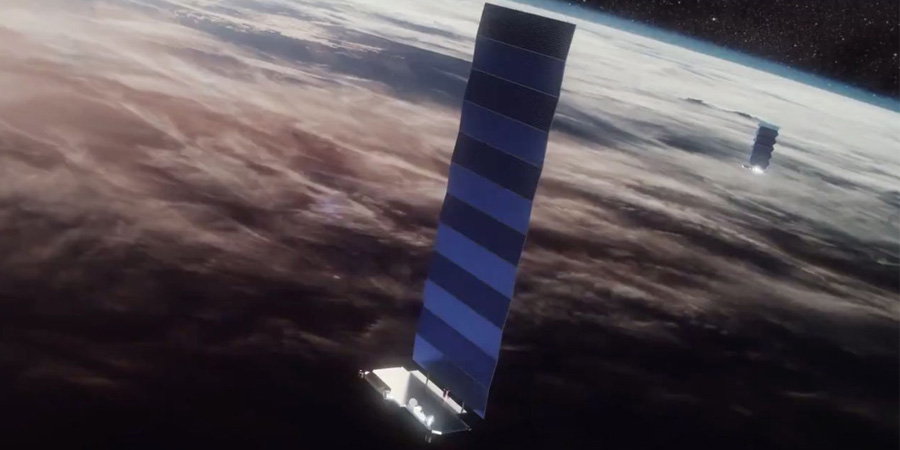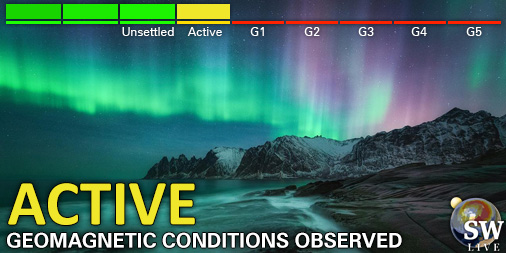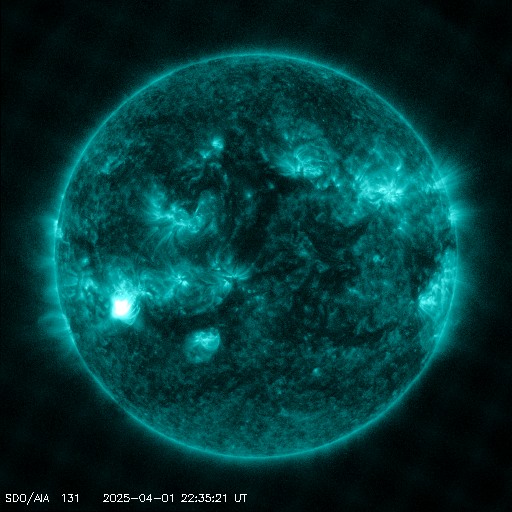Geomagnetic storm blamed for the loss of 40 Starlink satellites
Wednesday, 9 February 2022 15:22 UTC

Not a whole lot happening on the Sun today. Space weather is fairly quiet but we could see the passage of a minor coronal mass ejection within the next 24 hours which could stir up to minor G1 geomagnetic storm conditions according to the NOAA SWPC. But that is not the main space weather story of today. It is SpaceX which steals the headlines today. A geomagnetic storm is blamed by the company for the loss of 40 (out of 49) Starlink satellites launched last Thursday.
The company states that following launch, SpaceX deploys its satellites into a low orbit so that in the very rare case any satellite does not pass initial system checkouts it will quickly be deorbited by atmospheric drag.
However, these satellites were launched just before a geomagnetic storm commenced on Feb 4 which reached the minor G1 geomagnetic storm threshold. Geomagnetic storms temporarily warm up the thermosphere ever so slightly and this causes increased drag for satellites in low orbit.
The company further states that the Starlink team commanded the satellites into a safe-mode where they would fly edge-on (like a sheet of paper) to minimize drag. Unfortunately it was later established that due to the increased drag up to 40 of the satellites could not leave safe-mode to begin orbit raising maneuvers. These satellites will reenter or already have reentered the Earth’s atmosphere. The good news is that according to SpaceX, the deorbiting satellites pose zero collision risk with other satellites and by design demise upon atmospheric reentry.
Another reminder that space weather is more important to keep an eye on than ever before as we are sending more satellites and humans into space!
Thank you for reading this article! Did you have any trouble with the technical terms used in this article? Our help section is the place to be where you can find in-depth articles, a FAQ and a list with common abbreviations. Still puzzled? Just post on our forum where we will help you the best we can!
Current data suggests there is a slight possibility for aurora to appear at the following high latitude regions in the near future
Arkhangelsk, Norilsk, VorkutaLatest news
Latest forum messages
Support SpaceWeatherLive.com!
A lot of people come to SpaceWeatherLive to follow the Sun's activity or if there is aurora to be seen, but with more traffic comes higher server costs. Consider a donation if you enjoy SpaceWeatherLive so we can keep the website online!

Latest alerts
04:03 UTC - Hemispheric Power Index
The OVATION model predicts the Hemispheric Power Index to reach 50GW at 04:56 UTC
01:45 UTC - Geomagnetic activity
Active geomagnetic conditions (Kp4) Threshold Reached: 01:32 UTC
Tuesday, 1 April 2025
22:51 UTC - Solar flare
Moderate M2.5 flare
22:30 UTC - Radio Blackout
Minor R1 radio blackout in progress (≥M1 - current: M1.45)
07:15 UTC - 10cm Radio Burst
Begin Time: 01/04/2025 06:45 UTC Maximum Time: 01/04/2025 06:45 UTC Duration: 1 minutes. Peak flux: 190 sfu
Space weather facts
| Last X-flare | 2025/03/28 | X1.1 |
| Last M-flare | 2025/04/01 | M2.5 |
| Last geomagnetic storm | 2025/03/27 | Kp5 (G1) |
| Spotless days | |
|---|---|
| Last spotless day | 2022/06/08 |
| Monthly mean Sunspot Number | |
|---|---|
| February 2025 | 154.6 +17.6 |
| April 2025 | 147 -7.6 |
| Last 30 days | 128.8 -21.8 |




